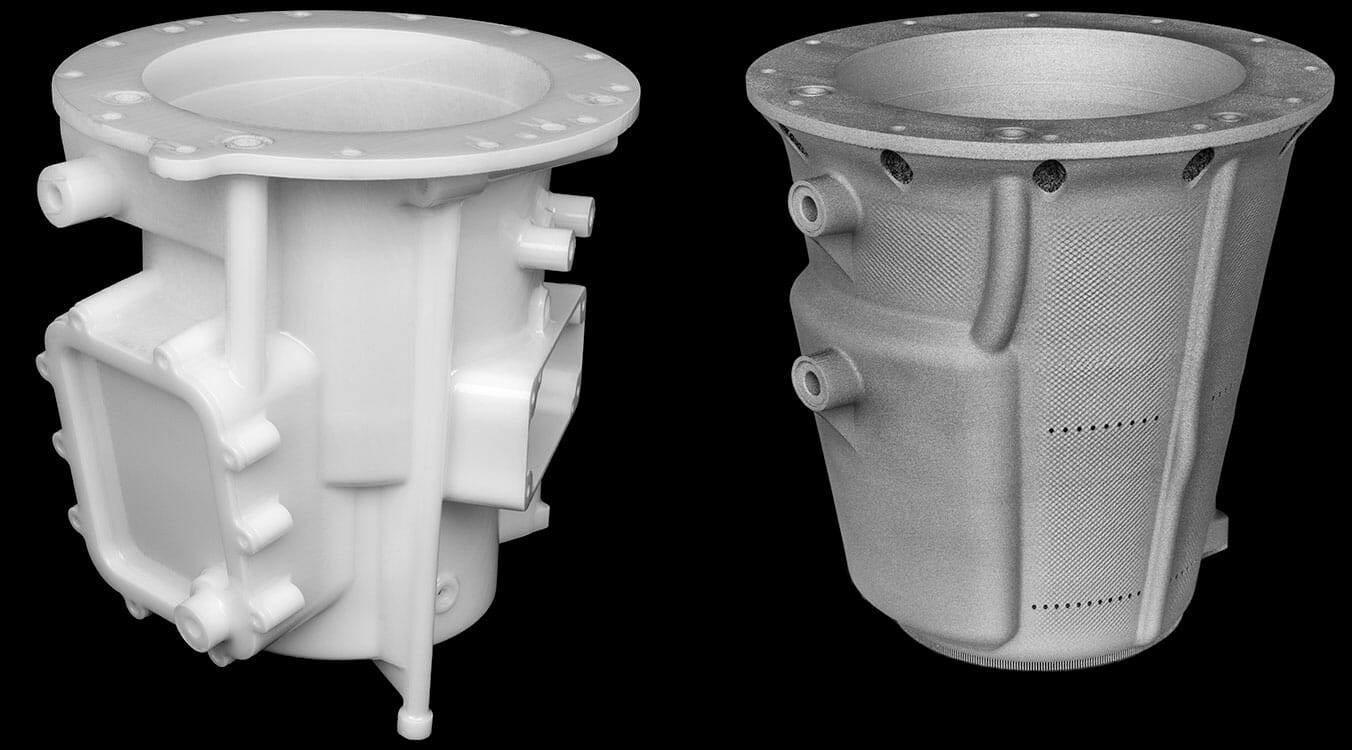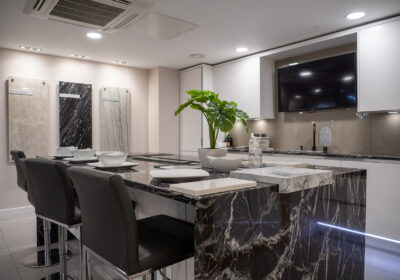Safran Electrical & Power designs and produces electrical systems for commercial and military aircraft for both fixed and rotary wing aircraft. With a desire to improve design knowledge coupled with an increasing number of customers requesting parts to be made by AM Safran Electrical & Power knew they needed to enlist an AM design specialist.
Dr Mark Craig is the Additive Manufacture focal point for the Power Division within Safran Electrical & Power he noted: “We came across Betatype in a search for additive manufacturing specialists and it was clear after our initial discussions that they had the knowledge and skillset we were looking for to add value in our new part production programme.”
The Power Division 3D printing team were looking for ways to improve the design of an electrical generator housing. By exploiting the technical advantages of 3D printing, Betatype were able to improve the design of the housing by focusing on a number of key areas: improved strength, increased stiffness and a reduction in overall weight.
Auxiliary Power Unit Generator First Generation Housing / Animation highlights the complex internal and external structure of the componet, unifying complex cooling and reservoir volumes while providing maximised stiffness.
To tackle this issue, Betatype developed a proof of concept using an ultra-high density lattice as part of a sandwich structure with over 10 million elements – a first for the company as part of a case study. The initial work has been very encouraging and Safran is very keen to pursue this avenue further within housings and other components.
Betatype CEO, Sarat Babu explained, “We knew creating a more complex, higher density lattice structure was the key to achieving what Safran was looking for in the part. Applying our technology and multi-scale approach, we were able to control the scan path and exposure settings down to each element of the sandwich structure’s design. By pushing laser powder bed fusion well beyond its standard processes, we created the ultra-high density lattice structure required.”
Betaype’s proof of concept proved a success. It optimised Safran’s generator housing designs for AM, unifying the design from several complex machined components into one part. Betatype were able to dramatically reduce the overall part count and manufacturing times – adding value and saving costs.
Update
Following on from the original proof of concept, Safran and Betatype continue to collaborate to evolve this project further and push the boundaries of what is possible with metal AM. This is achieved through specific application development combined with Betatype’s specialized, scalable Process Control technology.
The latest design achieved further dramatic results for Safran.
This included a complex part with a weight reduction of 30% compared with the previous iteration. Inherent to this progress is a related reduction in material usage and material waste.
A further reduction — again 30% — in build times was also achieved. Scan path optimisation and precise process control that could not be achieved with the standard AM software, were the main contributing factors in speeding up the build process and significantly increased productivity.
In addition, the latest iteration of the part saw the team switch from the sandwich panel to external ribbing. This reduced the profile volume, while maintaining the required stiffness and enabled the parts to be produced in Aluminium, rather than Titanium.
Utilising Betatype’s two core capabilities (software technology development and AM application expertise) together with Safran’s key knowledge and expertise of Energy and Power applications this project continues to evolve and push the capabilities of metal AM.





